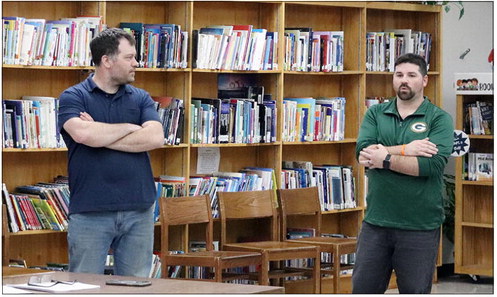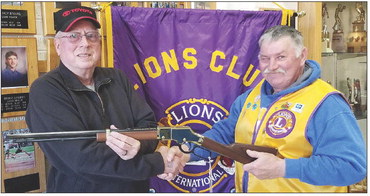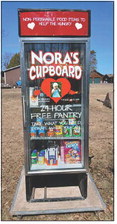Slapping a band-aid on it just isn’t working anymore


By Ginna Young On the outside, the Cornell Middle/High School building looks perfectly fine, but once you delve farther than the gym, commons and bathrooms adjoining that, it’s easy to see that something has to be done. Therefore, the district engaged the services of CESA 10, to conduct a facility audit, showing just exactly what work is needed.
Going off of their findings, CESA reported what the biggest needs are, March 24, which includes sanitary and domestic water piping.
“The water main distribution – all of that needs to be replaced,” said Lindsey Schreiner, CESA facility adviser.
The next is having a secure entrance. Visitors have to be buzzed into the building, but after that, well, there’s no way to “trap” them in an entrance vestibule, like most schools have.
“When you get buzzed in, you have full access to your whole building,” said Luke Schultz, CESA director of facilities management.
Also, the fire alarm and protection service is not functioning, and is outdated.
“The fire chief has given the district some time to resolve this,” said Schreiner.
“It’s basically identifying where the fire would be,” said Cornell superintendent Paul Schley.
On the exterior, the school needs a full-building tuck pointing project, as well as taking a look at the “teetering” bell memorial wall. CESA also feels the security cameras and fob access are in need of upgrades.
“Along with that, we would be looking at a PA system throughout the building, as well as a digital clock system, and everything integrated and tied in together,” said Schreiner.
Some parts of the roofing is in decent condition, but parts do need to be redone, while the airflow system needs to be replaced, so it can be directed to certain spaces, instead of heating or cooling the entire building. Currently, there are some rooms that are blocked off, to try to save energy, since the spaces are not in use.
See SLAPPING A BAND_AID / Page 3
Lindsey Schreiner, CESA facility adviser (left), explains a factor of a recent Cornell High School building audit to board member Stephanie Seidlitz (right), March 24. CESA reported their findings and will finalize numbers for the board, so proceedings can begin toward requesting a maintenance referendum be passed by taxpayers next year. Until then, the public can review the audit at cornell.k12.wi.us.
Photo by Ginna Young Continued from Front
The windows in the building are not functional, with many screwed shut and the lighting could stand to be updated.
The CESA representatives also want people to keep in mind, that if they replace ceiling tiles, they may find asbestos or lead paint, which increases the costs of the project.
“It all kind of snowballs together,” said Schreiner.
“It just depends on how far you want to go,” said Schultz.
All of this adds up, so, the district could do a “band-aid” fix, to buy a few more years, which would be the lowest cost, but the state will eventually step in and insist the issues be addressed. Or, for a higher price tag, a mostly new building could be constructed.
“This building is not fixable, I don’t care what anybody says,” said school board member Jamie Close.
It is possible to get a FEMA grant, which would cover roughly three-quarters of the project, but, it’s not guaranteed. Schley mentioned that the district is not allowed to levy enough to build a whole new facility in a separate location, as some would like to see.
No matter what, Eileen Sikora, board member, knows it’s important to include the residents in the district, giving them a voice.
“We can’t just shut the community down,” she said. Schultz agreed and shared that once the board has the project numbers, they would host facility tours and even a focus group. For the time being, CESA will get a couple options that could be brought before the community, with the price to the district if they receive a grant and if they don’t.
For all present, the feeling was, that they have no choice, but to move forward with a maintenance referendum in the spring of 2026. That’s why the process is being “slow walked,” so all the information can be presented to the public.
“What happens if we do nothing, because nothing gets passed?” asked Schley. “I still think that needs to be a conversation. If they don’t approve it, eventually, you’re going to shut it down.”




